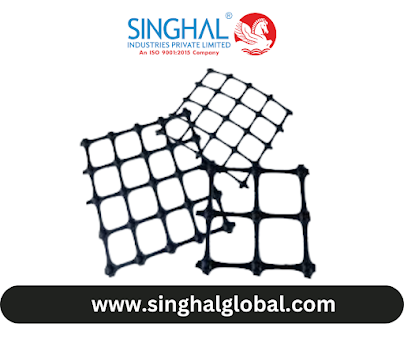Understanding HDPE Bags: Versatile Solutions for Packaging and Storage
High-density polyethylene (HDPE) bags have emerged as a popular choice in various industries due to their durability, versatility, and eco-friendliness. As the demand for effective packaging solutions increases, HDPE bags are widely utilized in agriculture, retail, food packaging, and more. This article delves into the features, benefits, and applications of HDPE bags, highlighting the roles of plastic sack manufacturers and suppliers in the industry.
What Are HDPE Bags?
High-density polyethylene bags are made from a type of plastic known for its high strength-to-density ratio. These bags are produced through a process that involves melting and extruding HDPE resin, resulting in lightweight yet sturdy packaging solutions. HDPE bags can be clear, colored, or printed, making them suitable for various branding and packaging needs.
Key Features of HDPE Bags
Durability: HDPE bags are resistant to tearing and puncturing, making them ideal for packaging a wide range of products, from groceries to industrial materials. Their strength ensures that they can hold heavy items without breaking.
Water Resistance: One of the significant advantages of HDPE bags is their water-resistant properties. They protect contents from moisture, making them suitable for storing and transporting food items and other sensitive products.
Lightweight: HDPE bags are lightweight, which reduces shipping costs and makes them easy to handle. This characteristic is especially beneficial for retailers and manufacturers looking to optimize logistics.
Recyclability: HDPE bags are recyclable, contributing to sustainable practices in packaging. Many consumers and businesses are now prioritizing eco-friendly options, and HDPE bags can be repurposed into new products.
Customization: Plastic sack manufacturers offer a variety of sizes, colors, and printing options for HDPE bags, allowing businesses to customize their packaging to meet specific branding needs.
Applications of HDPE Bags
1. Retail Packaging
HDPE bags are commonly used in retail environments, especially for carrying groceries and other merchandise. Their durability and resistance to moisture make them ideal for holding various items, from fresh produce to household goods.
2. Agriculture
In the agricultural sector, HDPE bags are used for packaging seeds, fertilizers, and other agricultural products. Their strength ensures that these materials are securely contained, while their resistance to moisture helps preserve the quality of the contents.
3. Food Packaging
Many food manufacturers use HDPE bags for packaging snacks, grains, and frozen foods. The water-resistant properties of these bags help protect food items from spoilage and contamination, ensuring they reach consumers in optimal condition.
4. Industrial Use
HDPE bags are also widely used in industrial applications for packaging bulk materials, chemicals, and powders. Their ability to withstand harsh conditions and heavy loads makes them a reliable choice for manufacturers and suppliers.
5. Waste Management
HDPE bags are often utilized for waste collection and disposal. Their strength and durability make them suitable for handling various types of waste, from construction debris to household garbage.
The Role of Plastic Sack Manufacturers and Suppliers
The growing demand for HDPE bags has led to the emergence of numerous plastic sack manufacturers and suppliers. Here’s how they contribute to the industry:
1. Quality Production
Reputable Plastic sack manufacturers prioritize quality in their production processes. They utilize advanced technologies and materials to ensure that HDPE bags meet industry standards for durability and performance.
2. Variety of Options
Manufacturers and suppliers offer a wide range of HDPE bags, including different sizes, thicknesses, and colors. This variety allows businesses to choose the most suitable bags for their specific needs.
3. Customization Services
Many Plastic sack suppliers provide customization options, allowing businesses to print logos, product information, and other branding elements on their HDPE bags. This personalization enhances brand visibility and customer recognition.
4. Sustainable Practices
As environmental awareness increases, many manufacturers focus on producing recyclable and eco-friendly HDPE bags. This commitment to sustainability aligns with the growing consumer demand for responsible packaging solutions.
Summary
High-density polyethylene bags are versatile and durable packaging solutions used across various industries. Their water resistance, lightweight nature, and recyclability make them an attractive option for retailers, manufacturers, and consumers alike. With the support of plastic sack manufacturers and suppliers, businesses can access a wide range of HDPE bags tailored to their specific needs. As sustainability continues to be a priority in packaging, HDPE bags stand out as an eco-friendly choice that meets both practical and environmental goals. By investing in high-quality HDPE bags, businesses can enhance their packaging strategies while contributing to a more sustainable future.
Frequently Asked Questions (FAQs)
1. Are HDPE bags safe for food packaging?
Yes, HDPE bags are considered safe for food packaging. They are non-toxic and meet safety standards for food contact, making them a popular choice for packaging various food items.
2. Can HDPE bags be recycled?
Absolutely! HDPE bags are recyclable, and many recycling facilities accept them. It’s essential to check with local recycling programs to ensure proper disposal.
3. How do I choose the right HDPE bag for my needs?
When selecting an HDPE bag, consider factors such as size, thickness, and intended use. If you require custom branding, consult with plastic sack manufacturers to explore available options.
.png)

Comments
Post a Comment